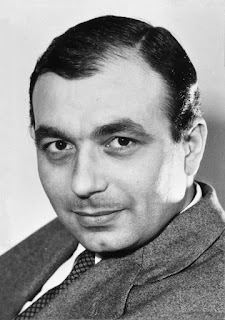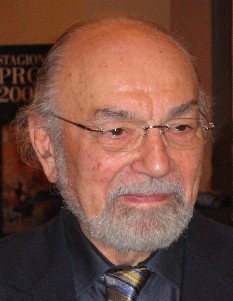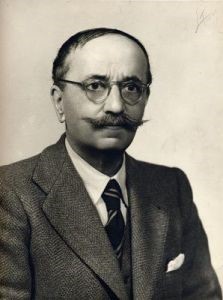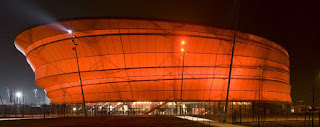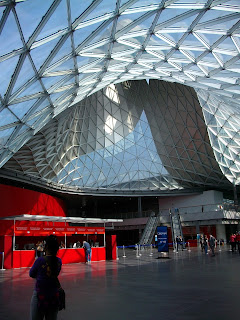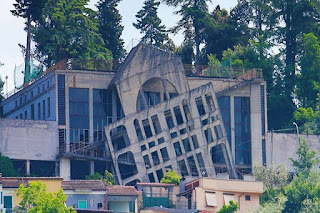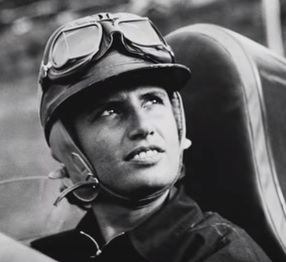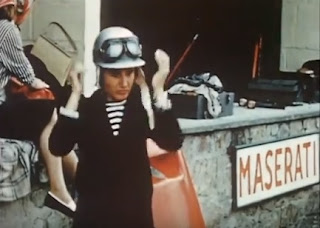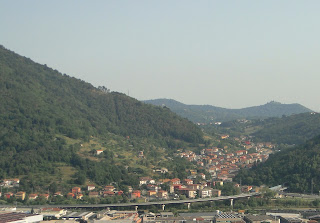Despotic ruler presided over chaos in southern Italy
 |
Ferdinand IV of Naples as a boy, painted by
the German painter Anton Raphel Mengs |
The Bourbon prince who would become the first monarch of a
revived Kingdom of the Two Sicilies was born in Naples on this day in 1751.
Ferdinando, third son of King Carlos (Charles) III of Spain,
was handed the separate thrones of Naples and Sicily when he was only eight
years old after his father’s accession to the Spanish throne required him to abdicate
his titles in Spanish-ruled southern Italy.
In a 65-year reign, he would preside over one of the most
turbulent periods in the history of a region that was never far from upheaval,
which would see Spanish rule repeatedly challenged by France before eventually
being handed to Austria.
Too young, obviously, to take charge in his own right when
his reign began officially in 1759, he continued to enjoy his privileged
upbringing, alternating between the palaces his father had built at Caserta,
Portici and Capodimonte.
Government was placed in the hands of Bernardo Tanucci, a
Tuscan statesman from Stia, near Arezzo, in whom King Charles had complete
trust. Tanucci, who fully embraced the enlightened
ideas that were gaining popularity with the educated classes across Europe, had
his own ideas about running the two territories, and did little to prepare the
boy for the responsibilities he would eventually inherit as Ferdinand IV of
Naples and Ferdinand III of Sicily.
Indeed, Tanucci was more than happy to encourage him to
pursue the frivolous activities of youth for as long as he wished while he continued
the liberal reforms King Charles had set in motion. Ferdinand reached the age of
majority in 1767 but was prepared to allow Tanucci to continue to call the
shots.
 |
Bernardo Tanucci, the trusted statesman who
governed Naples and Sicily as regent |
It all changed, however, in 1768 when Ferdinand married
Archduchess Maria Carolina, daughter of the Hapsburg Empress Maria Theresa and
sister of the ill-fated French queen Marie Antoinette.
The marriage was part of a treaty between Spain and Austria,
by the terms of which Maria Theresa would be given a place on Tanucci’s
governing council once she had produced a male heir to her husband’s crowns.
The new Queen considered herself to be enlightened too but did
not care for Tanucci and had her own long-term agenda for Austrian rule over
the territory. She had to wait until
1775 to give birth to a son, following two daughters, but by 1777 had found a reason
to dismiss Tanucci.
Maria Carolina dominated Ferdinand, but herself was heavily
influenced by Sir John Acton, the English former commander of the naval forces
of the Grand Duchy of Tuscany, whom she hired to reorganise the Neapolitan navy.
Acton, promising to support Maria Carolina’s wish to free
Naples from Spanish rule, was soon appointed commander-in-chief of both the
army and the navy and eventually prime minister, much to the disapproval of the
Spanish monarchy, who were about to go to war against Britain alongside France.
In the meantime, thanks to Ferdinand’s incompetence and
Acton’s manoeuvring for power, Naples was so poorly governed it became clear that
something similar to the French Revolution, which had famously toppled the
French monarchy, could be about to be repeated in Naples.
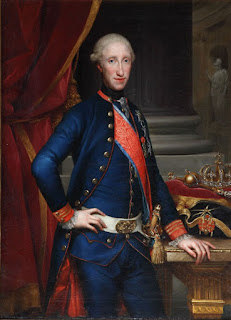 |
Ferdinand aged 22 or 23, again painted by
Anton Raphael Mengs |
Not surprisingly, the execution of Marie Antoinette in Paris
in 1793 had a profound effect on Maria Carolina. Abandoning all pretence to enlightenment,
she persuaded Ferdinand to pledge the Kingdom of Naples to the War of the First
Coalition against republican France, while at the same time summarily rounding
up anyone in southern Italy suspected of revolutionary intentions.
For the next 23 years, Ferdinand’s forces fought the French
in one conflict after another. Obliged the make peace in 1796 when faced with the
young commander Napoleon Bonaparte’s march into central Italy, the Bourbon king
then enlisted the help of Nelson’s British fleet in the Mediterranean to support a counter
march on Rome in 1798.
Driven back rapidly, Ferdinand took flight, leaving Naples
in a state of anarchy as he took refuge in Sicily. Bonaparte’s troops soon marched
into Naples and in January 1799 established the Parthenopaean Republic.
Ferdinand now turned his attention to rooting out and
executing suspected republicans in Palermo, but when Napoleon was forced to
send most of his soldiers back to northern Italy, Ferdinand despatched an army
led by the ruthless commander Fabrizio Cardinal Ruffo to crush the Parthenopaean
Republic and reclaim Naples.
Yet Ferdinand was driven out again six years later when
Napoleon’s victories against Austrian and Russian forces in the north allowed
him to send another army to Naples, led by his brother Joseph, whom he proclaimed
king of Naples and Sicily.
 |
Mengs painted Queen Maria Carolina in
1768, around the time they were married |
In fact, Ferdinand remained ruler of Sicily, with British
protection, although protection that came at a price that included granting the
island a constitutional government and sending Maria Carolina into exile in
Austria, where she died in 1814.
Ferdinand made another triumphant return to Naples in 1815
after Joseph Bonaparte’s successor, Joachim Murat, was defeated by the
Austrians and Ferdinand was reinstated as King of Naples and Sicily.
Now completely beholden to the Austrians, he abolished Sicily’s
constitutional government and declared himself Ferdinand I of the Two Sicilies,
bringing the two kingdoms together as one, as they had been for a brief period
in the 15th century.
But for all Ferdinand’s attempts to eliminate revolutionary
elements in Naples and Palermo, the mood for change would not go away, if
anything gaining momentum through resentment of the Austrians. After Ferdinand’s
death in 1825 the new Kingdom of the Two Sicilies lasted only until 1860, when
it was conquered by Giuseppe Garibaldi’s volunteer army to complete Italian Unification.
 |
| The facade of the Royal Palace at Portici |
Travel tip:
The vast wealth of King Charles enabled him to build lavish
palaces around Naples. Portici, close to
the Roman ruins at Ercolano (Herculaneum), was constructed between 1738 and
1742 as a private residence where he could entertain foreign visitors. Today it
has a botanical garden that belongs to the University of Naples Federico II and
houses the Accademia Ercolanese museum.
The palace at Capodimonte, in the hills above the city, was originally
to be a hunting lodge but turned into a much bigger project when Charles
realised the Portici palace would not be big enough to house the Farnese art
collection be inherited from his mother, Elisabetta Farnese. Today it is home
to the Galleria Nazionale (National Gallery), with paintings by Raphael, Titian,
Caravaggio, Masaccio, Lotto, Bellini, Vasari and many more. Charles never actually slept in the spectacular
Royal Palace at Caserta, modelled on the French royal family’s Palace of
Versailles and containing 1,200 rooms, having abdicated before it was completed.
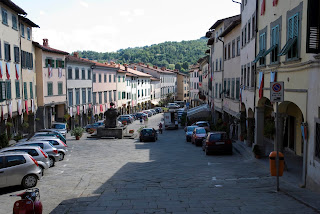 |
| The Piazza Tanucci in the village of Stia |
Travel tip:
Stia, the Tuscan village of Bernardo Tanucci’s birth, is the
first large community in the path of the Arno, the source of which is in the
nearby Monte Falterona. Florence lies some 40km (25 miles) downstream. Situated
in the beautiful Casentino valley area around Arezzo, Stia is a charming village in
which the unusual triangular main square, which slopes sharply at one end, is
named Piazza Tanucci in honour of the statesman. In the square, which has covered
arcades of shops and restaurants along each side, can be found the church of
Santa Maria della Assunta, which has a 19th century Baroque façade concealing
a well-preserved Romanesque interior that possibly dates back to the late 12th
century.




